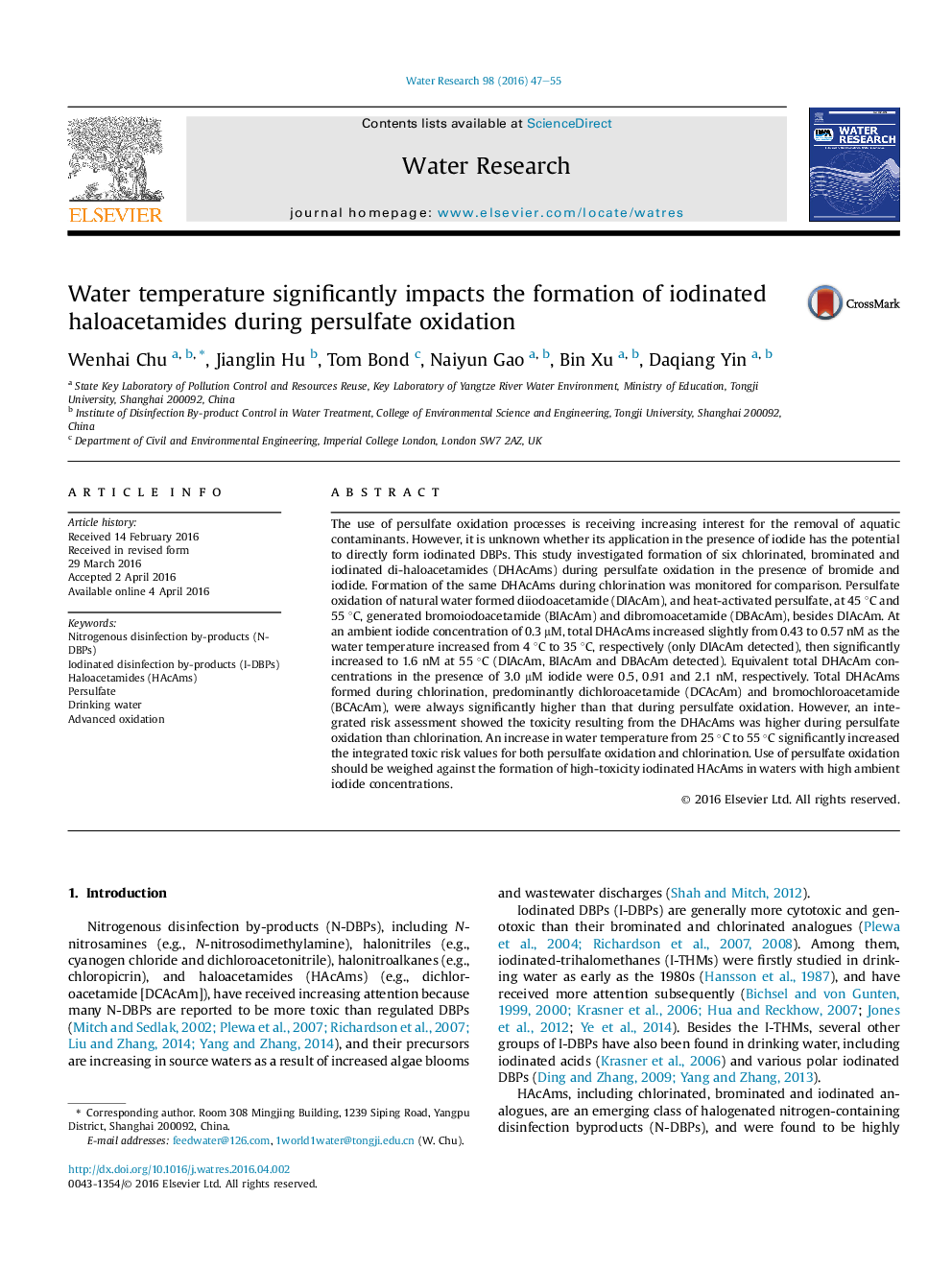| کد مقاله | کد نشریه | سال انتشار | مقاله انگلیسی | نسخه تمام متن |
|---|---|---|---|---|
| 4480969 | 1623070 | 2016 | 9 صفحه PDF | دانلود رایگان |
• Unactivated persulfate (PS) oxidation of iodide containing water forms DIAcAm.
• BIAcAm and DBAcAm form during PS oxidation at enhanced water temperature.
• Chlorination forms more total DHAcAms than PS oxidation.
• DHAcAm toxicity was higher from PS oxidation than from chlorination.
• DHAcAm toxicity increases with temperature for PS oxidation and chlorination.
The use of persulfate oxidation processes is receiving increasing interest for the removal of aquatic contaminants. However, it is unknown whether its application in the presence of iodide has the potential to directly form iodinated DBPs. This study investigated formation of six chlorinated, brominated and iodinated di-haloacetamides (DHAcAms) during persulfate oxidation in the presence of bromide and iodide. Formation of the same DHAcAms during chlorination was monitored for comparison. Persulfate oxidation of natural water formed diiodoacetamide (DIAcAm), and heat-activated persulfate, at 45 °C and 55 °C, generated bromoiodoacetamide (BIAcAm) and dibromoacetamide (DBAcAm), besides DIAcAm. At an ambient iodide concentration of 0.3 μM, total DHAcAms increased slightly from 0.43 to 0.57 nM as the water temperature increased from 4 °C to 35 °C, respectively (only DIAcAm detected), then significantly increased to 1.6 nM at 55 °C (DIAcAm, BIAcAm and DBAcAm detected). Equivalent total DHAcAm concentrations in the presence of 3.0 μM iodide were 0.5, 0.91 and 2.1 nM, respectively. Total DHAcAms formed during chlorination, predominantly dichloroacetamide (DCAcAm) and bromochloroacetamide (BCAcAm), were always significantly higher than that during persulfate oxidation. However, an integrated risk assessment showed the toxicity resulting from the DHAcAms was higher during persulfate oxidation than chlorination. An increase in water temperature from 25 °C to 55 °C significantly increased the integrated toxic risk values for both persulfate oxidation and chlorination. Use of persulfate oxidation should be weighed against the formation of high-toxicity iodinated HAcAms in waters with high ambient iodide concentrations.
Figure optionsDownload high-quality image (259 K)Download as PowerPoint slide
Journal: Water Research - Volume 98, 1 July 2016, Pages 47–55
